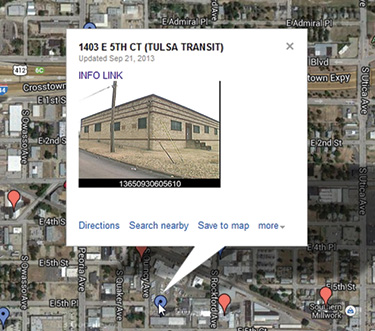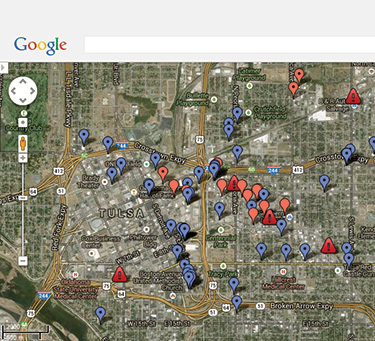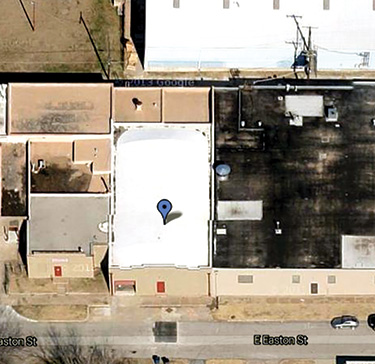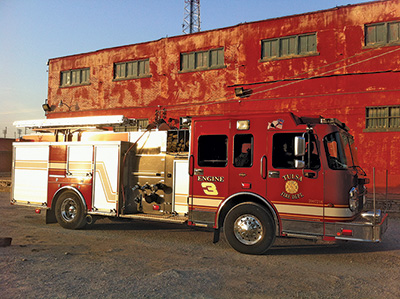BY TIM KUEHNERT
Firefighter safety is at the top of everyone’s list. From the top down, city administration, fire chiefs, training officers, company officers, drivers, and firefighters all agree that we have to do our jobs in a safe manner. One aspect of firefighter safety includes risk assessment. Risk assessment takes place on several levels in the forms of long-range planning, preincident planning, and tactical decisions made on the fireground.
Firefighters are accustomed to evaluating fireground risks. We identify potential threats to our safety by drawing on our training, experience, and instincts. We also participate in preincident planning-building surveys, building walk-throughs, and risk-specific company drills-to familiarize ourselves with the risks in our response area. Preincident planning lets us think through strategic and tactical options without the stress and urgency.
Bridging the gap between preincident planning and fireground risk assessment has always been a challenge. How do we bring the knowledge we gain during preplanning to the incidents when they occur, especially during the initial phases of an incident when key decisions are made? First-arriving companies must perform risk assessments using the information available. At a structure fire, this information may be limited to what responders can see and hear. The information gained from a building survey may be limited to what the responders can remember. Information is the key ingredient in risk assessment; it leads to better strategic and tactical decisions and enhanced firefighter safety.
 |
| (1) We combined county assessor data and information in Google Maps to compile and share the occupancy hazard information. (Photos by author.) |
The Tulsa (OK) Fire Department has implemented a program to provide initial responders with critical information when it is needed most. The program grew from a simple beginning: Engine 3 surveying occupancies in its first-in area. We, as many other companies, conduct informal walk-throughs designed to increase our knowledge of what we may face during fire operations. Engine 3’s area is comprised of some of the oldest structures in the city. Quickly, we noticed the prevalence of a serious threat to firefighter safety-bowstring truss construction.
Aware of the well-documented risks associated with bowstring truss structures, we decided to document our findings with the intent of sharing the information among the companies in our area. We had not determined how it might be shared, but we knew it needed to be shared given the deadly history of bowstring truss construction.
This history includes tragic incidents across the country-from large metro departments to small towns served by dedicated volunteer and career firefighters who have been injured or lost their lives fighting fires in structures with bowstring trusses. Hackensack and Cliffside Park, New Jersey; Brooklyn, New York; Chicago, Illinois; and Abbotsford, Wisconsin, serve as solemn reminders. In each instance, the need for better information about the structure played a role in the outcome.
 |
| (2) An overview of the bowstring truss locations in the city of Tulsa. |
Our focus on bowstring truss occupancies was a logical beginning. It is true that bowstrings are just a segment of dangerous construction types-truss construction in general may pose a risk of early collapse. The fact that bowstrings can be more easily identified by their signature curved roof led us to concentrate our efforts on identifying their locations across the city. Documenting these structures and sharing the information would make a rapid and substantial impact on firefighter safety.
The information is shared with responders in the initial dispatch from our fire alarm office. We met with Deputy Chief Scott Clark and shared our findings. He immediately suggested we upload the information into our computer-aided dispatch (CAD) system. The system allows a hazard indicator to be added to specific addresses. When an alarm is received for that address, dispatchers are directed to notify responding companies that the structure has bowstring construction.
The benefit was realized within one week of implementation and on numerous occasions since. In one instance, a business fire alarm in our first-in area was dispatched at approximately 0200 hours. Dispatchers relayed the bowstring hazard alert. Although the call was a system malfunction false call, we were armed with crucial information. Darkness and an obscured roof would have prevented us from knowing about the hazard. Engine 3 Captain Jason Gilkison commented, “This system is a big deal. The chances of our walking into a bad situation have diminished significantly.”
 |
| (3) We used satellite imagery to identify potential bowstring truss construction. |
The System
Phase 1
The survey and cataloging of bowstrings began with a clipboard and notes kept on the truck. As we discovered these structures in our first-in area, we noted the address and business name and transferred the information to a spreadsheet.
The system is comprised of two parts: documentation and communication. Documentation consists of our survey that includes identifying the structures and verifying the addresses. The communication portion consists of uploading the data into our CAD system and educating our members about the project.
Documentation is done in two phases. The goal of phase 1 was to identify as many structures as possible that contain bowstrings or are likely to contain bowstrings. The phase 1 survey was accomplished primarily from the exterior. The resulting list was uploaded to the CAD system, which enabled dispatch to notify companies en route. In a matter of weeks, the impact on firefighter safety was substantial.
We expanded our phase 1 survey by using Google Maps. Satellite and aerial imagery allowed us to spot the signature curved roofs. This is probably a better starting point than driving, as parapets or adjacent buildings obscure many of the roofs from view. Without this tool, 10 to 20 percent of the structures would have been omitted from our list.
Google Maps is a powerful resource in that, in addition to aerial views of the structures, it also aids in documentation, review, and sharing of the information. We carefully reviewed the imagery and added marker points to the map to designate structures that appeared to have bowstrings. Each marker point on the map can be populated with additional information including photos, addresses, notes, and links to the county assessor’s data for the property. You can save the map data for later and share them among users. You can save the entire file and export it as a KML file, facilitating the sharing of the information.
Data from our county assessor were used primarily to verify addresses of the properties on our list. Many county assessors have their data available online, allowing users to query and view parcel information. In our case, Tulsa County’s data can be queried using a map interface, making it easy to verify addresses (photo 1).
 |
| (4) The Engine 3 crew in downtown Tulsa investigating potential bowstring truss construction. |
Assessor data are a powerful resource for fire departments. The residential and commercial data can benefit the fire service in several ways. Specifically, our next project will be to query the residential property file to identify homes with basements. Basements are not common in Tulsa, but they are present in some older homes. As in the case of bowstring structures, responders’ safety will be increased when they are notified of the presence of a basement while en route.
Phase 2
Phase 2 includes on-site, interior verification of bowstring truss construction and the collection of additional information that includes the following:
- The presence of operational sprinkler systems and the material used in the truss (steel, wood, or a combination).
- The presence of storage in the truss spaces.
- The presence of compromised truss members (rot).
- The presence of roof hip rafters.
- The presence of unstable walls.
This information can be used to identify structures that present extreme hazards to responders-this is a way to flag the “worst of the worst.”
National Institute for Occupational Safety and Health (NIOSH) reports have shown that storage in the truss space, the truss material type, and compromised web members have played significant roles during fire conditions. These variables may cause the truss system to fail at an accelerated rate.
The communication portion of the system, as mentioned, includes getting the data into our CAD system. Dispatchers have taken an active role in ensuring that the system works. To their great credit, they studied the information and suggested an improvement. The improvement addressed a concern we realized early on: Many of the bowstring structures did not have a specific address; in some instances, an address contained several individual structures. Another challenge surfaced when a fire was reported in a general area or according to a cross street in the area; this happened frequently. The dispatchers suggested that entire blocks be flagged if a bowstring structure were present on the block. If a fire is reported in the general vicinity of 1000 S. Detroit, for example, dispatch will advise responding companies that 1011 S. Detroit is a bowstring.
The communication portion also includes training members on the system. The background of bowstrings, the geographic distribution of the structures in Tulsa, and the potential limitations of the system were explained in a PowerPoint® presentation we created. The presentation also alerts members that although many of the bowstrings are documented, some may not be identified. Nothing takes the place of thorough on-scene hazard assessment. Additionally, every member, regardless of rank, must be alert to potential hazards and speak up if they see one. Safety is everyone’s responsibility.
I created the Web site www.bowstringfire.com as a resource on bowstring structures to help educate other departments on bowstring trusses. There are also dozens of articles, videos, reports, and writings by notable fire service professionals on the Internet. Our site contains links to NIOSH investigation reports, articles, books and videos, summaries of notable bowstring incidents, a customizable PowerPoint® training presentation, and resources relative to placard legislation enacted by state and local governments.
TIM KUEHNERT has been a member of the Tulsa (OK) Fire Department since 1998 and is assigned to Engine 3 as fire equipment operator. He was a planning intern in the department and has been a member of the Resource Allocation Committee since 1994. He conducted an analysis of the station’s location, staffing, and apparatus as well as compiled a geographic analysis of the department’s performance vs. local and national standards. He has a degree in fire protection and safety engineering technology from Oklahoma State University.
Related Links
Construction Concerns for Firefighters: Trusses
Truss Roof Fire, Wyckoff, New Jersey
Reading A Building – The Bowstring Roof
Fire Behavior and Construction: From the Fire Engineering Vault: Hackensack Ford Fire
To request information go to fireeng.hotims.com
More Fire Engineering Issue Articles
Fire Engineering Archives

